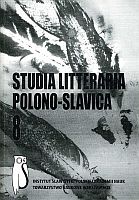Metafora w dyskursie naukowym
Metaphor in Scientific Discourse
Author(s): Stanisław GajdaSubject(s): Cultural Essay, Political Essay, Societal Essay
Published by: Instytut Slawistyki Polskiej Akademii Nauk
Summary/Abstract: In the scientific discourse the languages – „literal” and metaphoric – get mixed in a natural way. The metaphor performs three basic functions: cognitive one (ideational¬ heuristic¬ creative), pragmatic one (causative¬ persuasive) and the aesthetic one. There is a risk of an overuse of metaphors. We can observe some relations between the use of metaphors, for example: different phases of a problem situation (discovering problems and creating solutions generates more metaphors than a verification of the solutions); types of researchers’ mentality (cf. individual psychoepistemologies: empirism, rationalism, metaphorism, or the Jung’s four types of mind); levels of scientific thinking (cf. in philosophical thinking the distinction of metaphoric, conceptual and explicative levels); forms of scientific communities organizations and corresponding with their knowledge forms (cf. normal science, revolutionary science and textualised sciences). Science is cultivated by living people who use all their cognitive powers. Human psycho includes consciousness and subconsciousness. Cooperating with each other mind and intuition are their „organs”. The metaphor is a manifestation of this cooperation
Journal: Studia Litteraria Polono-Slavica
- Issue Year: 2008
- Issue No: 8
- Page Range: 29-42
- Page Count: 14
- Language: Polish

